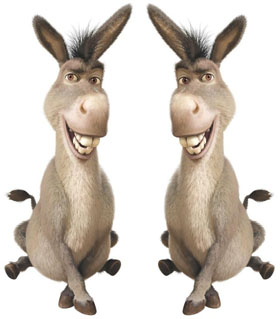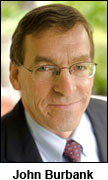OPINION
Washington’s top-two primary is limiting choices, alienating voters
By JOHN BURBANK
(Aug. 17, 2015) — If you are a Republican wanting to vote in the upcoming general election for Snohomish County offices, don’t bother. There are no Republican candidates for whom to vote. That is the sad outcome of an initiative that the voters in our state approved in 2004. With this initiative, the people voted to switch our method of election so that it copied the voting system in Louisiana.
This became known as the “top-two” primary. It won 60% support in 2004, and after a few years of confusion, was confirmed by the Supreme Court. The result is that less than a quarter of registered voters decide who goes onto the general election, and if the top two vote-getters in the primary are both Democrats, so be it. Republicans are left out in the cold.
 In last week’s primary, Democrat Dave Somers received a little more than 31,000 votes. Democrat John Lovick received a few votes over 30,000. Republican Bob Sutherland received 25,000 votes. (These numbers are all approximate, because the final tallies have not yet been released.) Who gets on the general election ballot? Somers and Lovick. Not Sutherland, and in fact, not any Republican. And not any third-party candidate, whether that person represents the libertarian party or the green party.
In last week’s primary, Democrat Dave Somers received a little more than 31,000 votes. Democrat John Lovick received a few votes over 30,000. Republican Bob Sutherland received 25,000 votes. (These numbers are all approximate, because the final tallies have not yet been released.) Who gets on the general election ballot? Somers and Lovick. Not Sutherland, and in fact, not any Republican. And not any third-party candidate, whether that person represents the libertarian party or the green party.
That is how this system has boiled down voter choice. You get to choose either a Democrat or a Democrat. Keep in mind that this is a county in which eight Republicans and 10 Democrats serve in the State Legislature, and in which Rob McKenna, the Republican candidate for governor, received 49% of the vote in Snohomish County in 2012.
It actually gets worse. In the race for Snohomish County Council #2, Democrat Brian Sullivan received 55% of the vote, and Democrat Greg Tisdal received 44%. There was no Republican candidate to choose, even in the primary. In Snohomish County Council District #3, there was only one candidate, Democrat Stephanie Wright. So there was no choice for either the primary or general elections.
So now we don’t have candidates and we don’t have voters. Seriously, why vote if you are a Republican and there is no Republican candidate on the ballot, or if you are any voter with any or no party affiliation, and there is only one candidate on the ballot?
A bigger question is how did we get here and how we reinvigorate our democracy. An election with one candidate is not an election.
One problem is the top-two primary. Washington’s Secretary of State has touted the top-two primary for more than a decade. The Secretary of State’s history of the top-two primary claimed in 2009 that, “(t)he public continues to respond positively to this form of primary.” That same history claimed in 2010 that, “Voters and candidates appreciate the focus on the candidates, not political parties.”
The actual voting statistics undermine this wishful propaganda. For example, in the last year before the top-two primary was put into effect, voter turnout for the primary exceeded 28%. Compare that to the less than 23% turnout this year. And in that pre-top-two primary year there were contested elections between Republicans and Democrats for the Snohomish County Executive and the two County Council seats up for election. These contests gave voters a true choice in the primary and in the general election. This year, no such luck. The 5% difference in turnout for the primary may not seem like a lot, but it amounts to more than 22,000 voters who didn’t bother to vote, compared to 2007.
And if that trend continues, we can expect over 40,000 fewer voters participating in the November general election than did, proportionally, in 2007. So much for voter appreciation of the top-two primary system.
Now, it is not just the top-two primary to blame. Certainly, when a major party, in the case the Republicans, fail to even field a candidate for a county council seat, the message that goes out to Republican voters is “why bother.” And with third-party candidates stricken from the general election ballot, the incentive to find and recruit credible candidates goes down the drain. And so, we get closer and closer to one-party and one-candidate elections.
 This is no way to run a democracy!
This is no way to run a democracy!
John Burbank is the executive director and founder of the Economic Opportunity Institute in Seattle. John can be reached at john@eoionline.org.





